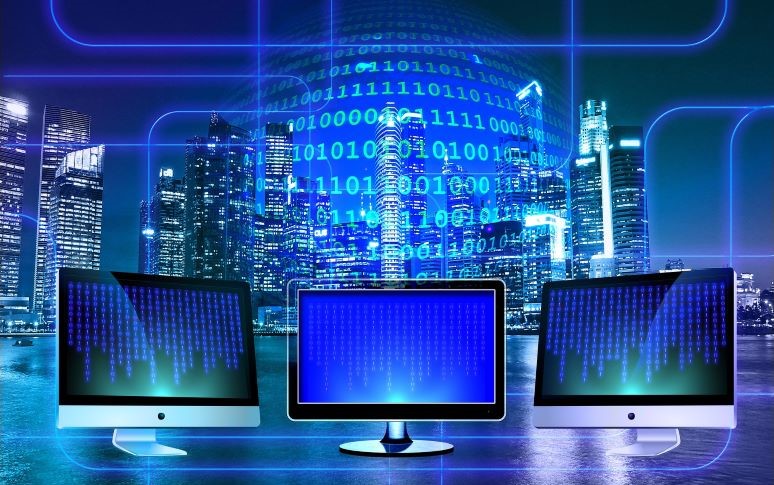The Eyes Have It for Your Tech StaffThe Eyes Have It for Your Tech Staff
Whether you are outfitting Millennials or seasoned professionals, technical staff will work smarter, more efficiently, and feel appreciated with the right monitor and complimentary devices.
January 11, 2024

Asking a technical staff member to do their job on a monitor that’s too small or the wrong shape is like asking a downhill racer to just use a snowboard – they’ll get to the bottom of the hill, but it won’t be quick or pretty.
In the first twenty years of this new millennium, larger monitors were prohibitively expensive, so many users opted for two smaller monitors placed in a V-shape. Consequently, users were constantly mousing to shift items from one screen to the other and using a lot of head movement to see everything. In addition, these monitors are meant to be viewed straight on, so turning them at that V-angle changed the distance of your eyes to the outer halves of both devices.
Aspect Ratio and Form Factor Matters
Today, larger monitors are inexpensive and come in basically three options, but many diagonal sizes within those options. The first option is the 16:9 aspect ratio, which usually translates to a monitor that’s 32 inches diagonal, 23 inches high and 28 inches wide. If you are working with drawings or other graphics, this ratio and monitor size might work best, as you have more of a square-shaped monitor that lends itself to viewing documents with a landscape orientation. If you primarily work on 8x11-shaped documents with a portrait orientation, you will find that you are too often lifting your chin and pinching the back of your neck to see the top portion of the monitor.
The second has a 21:9 aspect ratio, so monitors are 24 inches wide, but only nine inches high. If you are working with only text or number-heavy documents, like Word, email, PDFs, and even spreadsheets, this is truly the best replacement for the legacy two-monitor scenario. I replaced all of my 16:9 consulting staff monitors with this type for about $250 or less per monitor. Staff who are coming from two-monitor jobs, swear they can’t function without two devices but adjust within a day and end up loving this more.
The third option is a curved device in either of the above two scenarios. Bottom line – if you can afford the extra cost of a curved monitor for staff, buy them, but get the aspect ratio right for their type of work. The curve is much easier on the eyes and neck.
Regardless of which one you invest in, here are a few more tips for best-case use.
Use Monitor Stands
Use one or two (stacked) monitor stands, to get the height of the center of the upper half of the monitor in alignment with that staff’s eye level, when looking straight ahead. For the best ergonomic fit, it is better to drop your chin a little as needed, then lift it. We like the very high-tech looking Hemudu stands as they come in a two-pack, with stainless steel telescoping feet, and either clear or black tempered glass for about $32.
Turn Them Off
Ask staff to turn off their monitors every night before heading home. This helps preserve the asset for longer use, not to mention being a lot more “green.” You can easily set your operating system options to automatically turn off the screen when they lock their station at the end of their shift.
Laptop Users Need External Monitors, Too
Staff who are given laptops for travel still need a right-sized monitor for when they are in the office and even when working from home.
Buy USB-based Webcams
If you need staff to have webcams – which they probably do as we live in the video meeting age – I strongly recommend buying a USB-based add-on camera rather than monitors with built-in cameras.
Should the webcam stop functioning, the monitor will probably still in top performance, but the center top edge now has a non-working device, making it difficult to add the peripheral. I like the inexpensive Logitech C270. Yes, there are newer versions, but we only use them for the video, which is crisp and clear. However, I’ve found that the C270 has a poor microphone, so our staff continue using their separate headsets while on a video call.
Get the Settings Dialed In
Finally, encourage staff to take time to play with the video settings on their monitors to get exactly the right fit for them, given their lighting conditions, eyesight, and general comfort. For example, the eye-saving mode on Samsung monitors we use happens to be the opposite of eye-saving in our office, which has a lot of natural light (as opposed to traditional offices that usually have more artificial light).
If you invest in the right monitors and peripherals, your existing staff will see that you care for their eye health and well-being. Take a moment to show potential job candidates these same aspects, and they will see your work environment in a different light – pun intended.
Bobra is writing on behalf of the SCTC, a premier professional organization for independent consultants. Our consultant members are leaders in the industry, able to provide best of breed professional services in a wide array of technologies. Every consultant member commits annually to a strict Code of Ethics, ensuring they work for the client benefit only and do not receive financial compensation from vendors and service providers.
About the Author
You May Also Like





